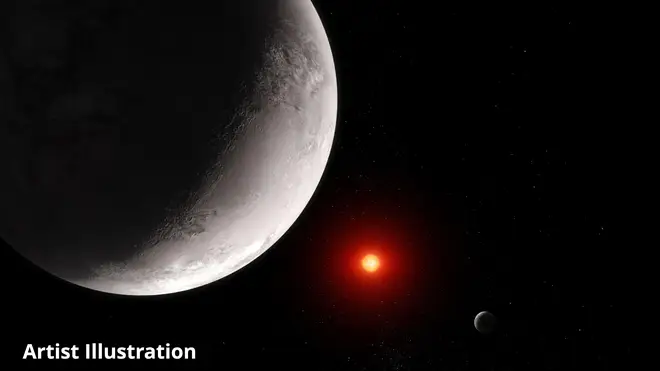
Tom Swarbrick 4pm - 6pm
11 July 2023, 10:08

A giant mirror planet has been discovered outside our solar system and has been described as the universe’s most reflective natural object.
Named LTT9779b, an exoplanet which orbits a sun-like star every 19 hours, has been discovered by astronomers.
An exoplanet is a planet that orbits a star outside our solar system.
The planet, which is located in the Milky Way galaxy, seems to be surrounded by metallic clouds made of titanium and silicates.
It has a diameter around 4.7 times greater than the Earth’s, and orbits its star at a range even closer than Mercury does to our sun.
Sitting around 264 light-years away from Earth, it is believed to reflect around 80% of incoming light, which makes it the universe’s most reflective natural object.
Comparatively, Venus which is the brightest object in the Earth’s night sky, reflects around 75% of incoming light and Earth reflects about 30%.
“It’s a giant mirror in space,” said Professor James Jenkins, an astronomer and co-author of the research in the journal of Astronomy and Astrophysics.
LTT9779b has a surface temperature of around 1,800C, a temperature even greater than molten lava, due to the intense solar radiation from its star.
Read more: New Zealand prosecutor alleges tourists were not warned before volcano eruption
Read more: Switzerland ‘to become a net importer of cheese this year for the first time’

Those who studied the planet used the European Space Agency’s CHEOPS orbiting telescope.
“We even think that the clouds could condense into droplets, and have titanium rain falling in parts of the atmosphere,” Professor Jenkins added.
Professor Vivien Parmentier, an astronomer from the Côte d’Azur Observatory in France, said the LTT9779b is “a planet that shouldn’t exist” given it has an atmosphere despite being situated so close to its star.
“The super-reflective cloud cover probably helped stop the planet from warming up too much and being stripped of its atmosphere,” Prof Parmentier said.
“This is quite unique as all other planets at this temperature that are big enough to keep their atmosphere are too hot to form clouds and are thus as dark as charcoal,” he continued.
Dr Sergio Hoyer, the leader author in the study and an astronomer from the Marseille Astrophysics Laboratory in France, added: “No other planet like this has been discovered to date.”
The planet has one side that is permanently ‘day’, facing the star, while the other is permanently ‘night’, facing away.
“The diversity of exoplanets is stunning,” Prof Parmentier said.
“And we have just scratched the surface.”